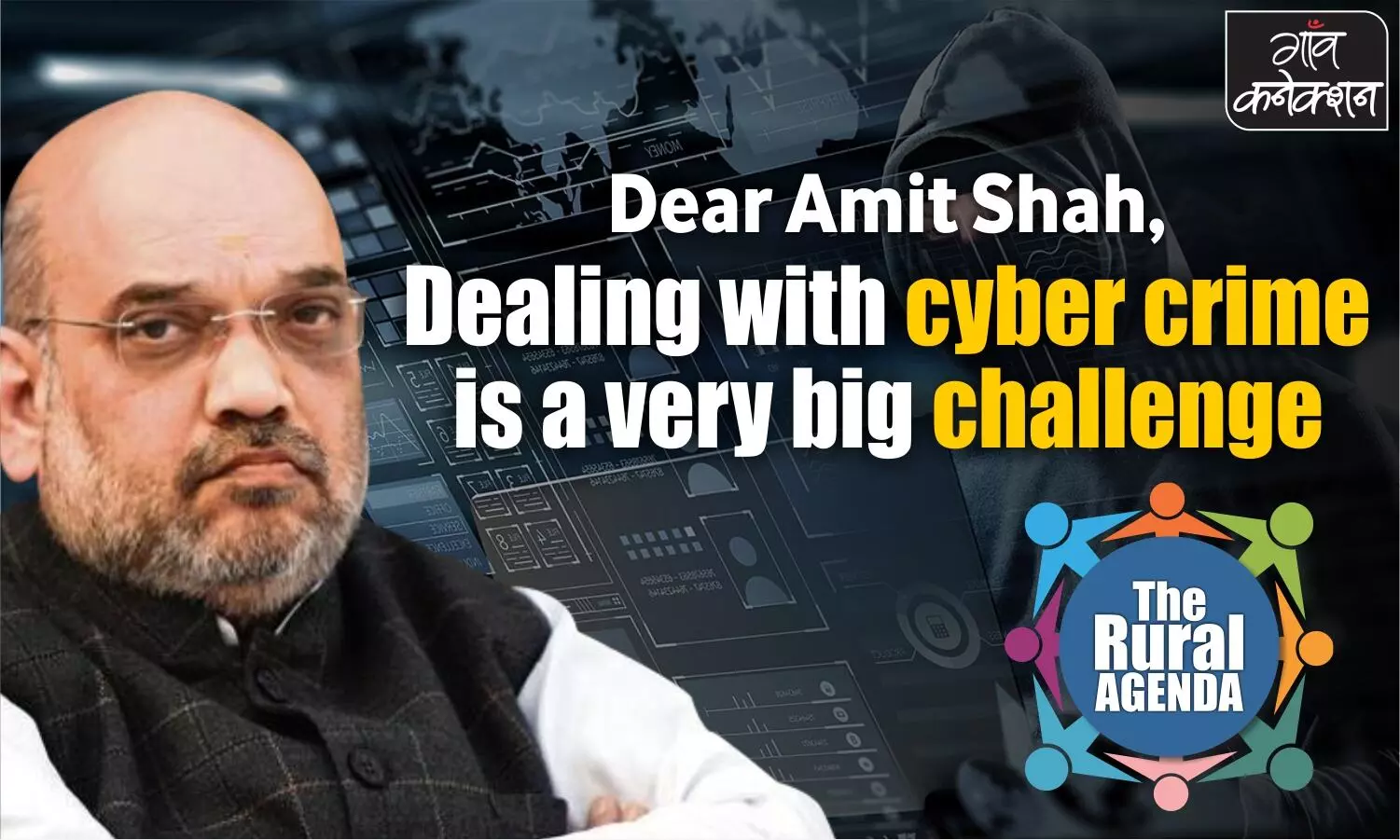
Dear Amit Shah, Digital India is great, but please deal with cyber-crime too
In 2017, India witnessed one case of cyber-crime every 10 minutes yet conviction in cases of cyber-crime in India continues to be abysmally low. Almost two-third of high-level officials fall prey to cyber-attacks. Interestingly, more than 50% of cyber-crime in India are traced to Jamtara -- a sleepy town in Jharkhand. This implies cyber-crime has spread like a spider web in India -- both, in urban and in rural areas

Ranvijay Singh 9 July 2019 10:42 AM GMT
The year was 2018. The said crime transpired one night at a nondescript village, Isauli, in Hamirpur district in Uttar Pradesh. A swanky car stopped outside the residence of one Awadhesh Yadav. Four suited and booted "officers" told Awadhesh that they were from Lucknow and were visiting the village to provide villagers with homes and toilets. They asked him to get Aadhar cards of all villagers for verification. They took thumb impressions of all of them. When villagers woke up the next day, money there was not a penny in their accounts. The fraudsters had used Aadhar-enabled Payment Services (AEPS) scheme to steal their hard-earned money. Such incidents happened in two other villages around the same time.
In 2017, India witnessed one case of cybercrime every 10 minutes yet conviction in cases of cyber-crime in India continues to be abysmally low.
The National Crimes Records Bureau released data in 2016 which revealed that India's rate for conviction for cyber-crime remains abysmally low. The report showed that in 2015, a total of 8,045 cybercrimes were reported. While 5,102 persons were arrested, only 250 were convicted. Maharashtra was found to have only 1 conviction in 2015. In 2014, 7,201 cyber-crimes were reported and only 65 persons were convicted.
No data pertaining to cyber-crime was released after 2016, but cyber-crimes have gone up consistently.
According to NCRB data, between 2010 and 2016, number of cases of cyber-crime went up from 966 to 12,317 -- an increase of 1,175%. In the year 2014-15 and 2015-16, 13,083 and 11,997 fraud cases pertaining to ATMs, credit/debit card and net banking were reported, the Rajya Sabha was informed on April 29, 2016.
Rajnath Singh, who was the home minister in the Narendra Modi's first term, had said while Inaugurating the Cyber Prevention, Awareness & Detection Centre (CyPAD) of Delhi Police and National Cyber Forensic Lab in February: "Cyber-crime has emerged as a big challenge. If we have to build public trust in a Digital World, then we will have to bear Zero Tolerance towards Cyber Crime." He had also said that cyber-crimes pose a challenge to traditional policing and called upon the Police personnel to hone their skills to tackle the threats posed from the cyber world.
The regime has changed and a new home minister has taken charge. The government will have to intensify its fight as almost two-third of high-level officials fall prey to cyber attacks. What's worse? Rural Indian, that has zero mechanism to cope with this new age crime, get affected too.
Interestingly, Union Home Secretary Rajiv Gauba, a 1982 batch IAS officer from Jharkhand, had revealed last year that Jamtara in Jharkhand has been identified as a new cyber hub for crime and more than 50% of cyber-crimes in India are traced back to this sleepy town of Jharkhand.
It thus becomes imperative for the government to act and make sure that the conviction rates in cyber crime cases go up.
No system in place to make people aware
Chatak Bajpai, who is a cyber-crime expert, said number of cases of cyber-crimes are likely to go up. "Initially, these crimes were at a very basic level, but things changed rapidly. Lot of work is being done to tackle with these crimes -- we can even see the implementation -- but we will have to come up with a long-term plan. We should look at Artificial Intelligence, as number of crimes will go up."
He added, "The cyber criminals directly get in touch with people. So, it's important to make people aware."
"Awareness is the key. We will have to inform people, especially those living in rural India, about various frauds related to ATM Card, One-time password and fake phone calls," said Sushil Chandran, SP, cyber-crime cell, Uttar Pradesh.
Need to change IT laws
The Information Technology Amendment Act, 20008 was a substantial addition to the Information Technology Act. "This happened in 2008. No change in law happened after that, but many things have changed after that in terms of online fraud cases. We need stronger laws," said Rakshit Tandon, a cyber expert.
He added: "We don't have a law for cyber bullying. We need a stronger law to deal with WhatsApp. The Data Protection Bill is the need of the hour."
The Home Ministry had said there will be a lab to deal with cyber-crime cases in each state. "But we need more such steps," he said.
Varun Kapoor, ADG, Narcotics, Madhya Pradesh, said: "The IT Act is not just to deal with cyber-crime. There are Acts in it that deal with cyber-crime. We need a separate Act to deal with cyber-crime."
Reporting cyber-crime should be made easy
Experts say reporting cyber-crime and registering complains in not easy. Cyber-crime expert Rakshit Tandon said: "People should be able to register complains online and they should be able to check the status of their complains online. There should be two kind of cells -- emergency cell and investigation cell. Law enforcement agencies should investigate cases registered in emergency cell as soon as possible as recovery of cash becomes difficult as time passes."




